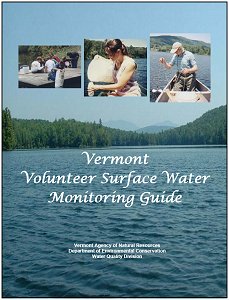
This Guide will walk groups and organizations through the steps of designing an appropriate monitoring program for lakes, streams, rivers and wetlands. This Guide also is significant in that it celebrates and highlights past and ongoing efforts of volunteer monitors and their programs in Vermont. The Watershed Management Division is grateful to past and current volunteers and hopes this Guide will refresh their enthusiasm and inspire new groups to develop programs. Volunteer monitors also will find a wealth of Vermont-specific resources in this Guide, as well as resources from national groups and organizations such as the U.S. EPA, USGS and the River Network that are involved in volunteer monitoring.
Front Cover & Title Page
Table of Contents
Acknowledgements
Section 1: Introduction: The History of Volunteer Monitoring and the Monitoring Design Worksheet
Section 2: Defining Your Questions: Why, What and Who
Section 3: Choosing Parameters to Support Your Questions
Part 1
Part 2
Section 4: Data Quality
Section 5: Planning Where, When and How to Monitor
Section 6: Data Management
Section 7: Converting Data to Information
Section 8: Evaluating Monitoring Program Performance
References
Appendix A: Resources
Appendix B: Considerations for Selecting and Using a Contact Laboratory
Appendix C: Existing Volunteer Surface Water Monitoring Manuals
Appendix D: Equipment and Supply Vendors
Appendix E: Useful Tools for Monitoring
Appendix F: VTDEC Uses of Volunteer Data
Appendix G: Glossary
Appendix H: Acronyms, Abbreviations and Symbols
Back Cover
